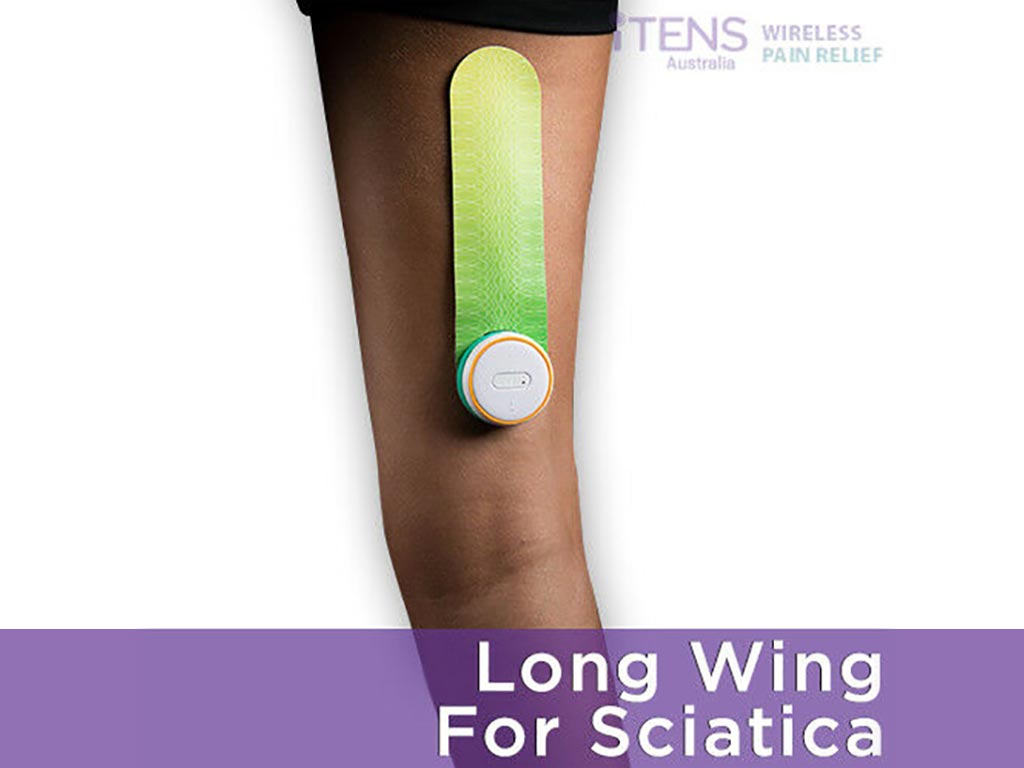
Sciatica is a common pain condition affecting many people daily. A pain management method that is gaining recognition because of its convenience and effectiveness is Transcutaneous Electrical Nerve Stimulation (TENS). TENS therapy for sciatica offers safe and drug-free relief. It utilises a portable electrode machine to deliver low-voltage electrical currents to the body. This causes the nerves to block pain signals, reducing the overall sensation of pain. Through this method, people can lessen their intake of medications.
People with sciatica typically seek various methods to manage the pain. This condition causes a sharp, knife-like sensation in the lower back and may radiate down to the thighs or legs. In addition, it usually affects one side of the body, but the effects can be debilitating. Using a TENS machine can help alleviate sciatica pain. In this article, we will explore TENS therapy, how it relieves pain, and how to use the device.
What is a TENS Therapy for Sciatica?
TENS therapy for sciatica is a non-invasive and drug-free method of pain relief. It uses a portable device to stimulate the nerves through electrical impulses. TENS treatment is commonly used in pain clinics and physical therapy centres to help people with acute or chronic pain. The electrical stimulation helps to disrupt the pain signals, providing temporary relief.
The effectiveness of TENS therapy can vary from person to person. While some individuals may experience significant pain alleviation, others may find it less effective. Moreover, the effects of TENS can last for up to four hours. Some may also use the device in combination with other treatments to further reduce the severity of the pain.
Furthermore, the TENS machine consists of a remote control that allows adjustment of settings. It connects to adhesive electrode pads that deliver mild electrical pulses on the skin of the target area. Likewise, it comes in two main types: the standard (wired) and wireless TENS machines. They are available over the counter or in online stores.
Symptoms Associated with Sciatica Pain
- The compression of the sciatic nerve can create sharp or shooting pain in the lower back or buttocks.
- Radiating pain down the leg, often following the path of the sciatic nerve.
- Numbness or tingling sensations.
- Intensified pain while sitting or standing for long periods.
- Burning pain in the affected leg or foot.
- Weakness or difficulty bending the knee or controlling leg movements.
- Pain when sneezing, coughing, or laughing.
- In some cases, it can feel like a jolt of pain or mild electric shock.
- Hip or pelvic pain.
- Weak reflexes and pain when lifting the leg straight.

How a TENS Therapy for Sciatica Works
TENS therapy for sciatica works based on the principles of electrical stimulation. Firstly, individuals can adjust the settings based on their pain conditions or comfort level. Low frequencies (10 Hz or below) stimulate the motor neurons. It triggers the body to release natural painkillers like endorphins. They are hormones that help suppress pain perception, reduce stress, and improve the overall sense of well-being.
Secondly, higher frequencies (50-150 Hz) stimulate the sensory nerves to disrupt the pain signals travelling to the brain. This action is referred to as the pain gate mechanism. The electrical currents induce certain nerve fibres in the spinal cord to block the pain pathways. It results in fewer messages that reach the receptors in the brain, providing temporary relief.
Additionally, the mild electrical impulses help to boost circulation. The increased blood flow promotes muscle relaxation and healing. It can help reduce swelling in inflamed areas, contributing to sciatic nerve pain. Through muscle relaxation, it lessens the factors that may irritate the nerve, especially for underlying conditions like spinal stenosis and herniated discs.
Benefits of the Therapy
TENS therapy offers numerous benefits and advantages for pain management. The device is non-invasive and safe for individual use. It provides natural pain relief, minimising the side effects of pain medications. In addition, it is safe and does not have long-term health risks. Therefore, people with chronic pain can use the device regularly.
Moreover, the TENS machine is easy to use, allowing for self-administration. It does not require the supervision of a health professional. Similarly, this minimises the need for regular doctor visits or physical therapy sessions, which can be costly and time-consuming. It is also suitable for other conditions like muscle spasms and arthritis.

How to Apply TENS Therapy for Sciatica
Operating a TENS machine is relatively simple. To administer treatment, the first step is to identify the area of pain. Individuals should position the electrode pads on the sides of the most painful spot. It could be on the lower back or legs. For pain that radiates downward, elongated TENS pads like iTENS are more suitable.
Once the electrodes are in place, turn on the TENS machine and adjust the settings. The pulse rate and pulse duration may vary based on individual feedback. It is best to follow the recommended instructions of the manufacturer or advice of a health professional. Likewise, start with a low intensity and gradually increase to a strong but comfortable level.
Next, set the treatment session for 30 to 45 minutes. After the therapy, ensure the device is turned off before removing the electrode pads. For continuous treatment, allow a 20-minute break between sessions. Some people may employ TENS therapy for sciatica pain relief three to four times daily.
Safety Precautions
While TENS is generally safe, there are some safety precautions that should be followed. Since it is an electrical device, it should not be used near water. Individuals should also not use the machine while sleeping or driving. People with pacemakers, heart conditions, and pregnant women should seek medical advice before using a TENS unit.
Furthermore, avoid pad placements on the spinal column, chest, and areas with open wounds, infection, and skin irritation. While using the device, avoid extreme intensity levels, as it can damage the nerves and muscles. In case of side effects, discontinue use and consult a doctor if symptoms persist.
Conclusion
TENS therapy for sciatica is a safe and effective way to manage the pain. It utilises small electric currents to stimulate the nerves in the pain area. It works by disrupting the transmission of pain signals and releasing endorphins. As a result, it helps to alleviate various sciatica pain symptoms. Some individuals may use the TENS machine with gentle exercise to maximise pain relief and improve the overall quality of life.
Operating the TENS machine is easy, and anyone can use it without professional supervision. It requires proper pad placement and correct stimulation levels. For safe use, start with the lowest settings and adjust them until they provide the most therapeutic effect. Nevertheless, it is vital to follow the safety precautions to avoid any potential risks or side effects. For best results, consult a doctor or physical therapist for guidance and advice.







